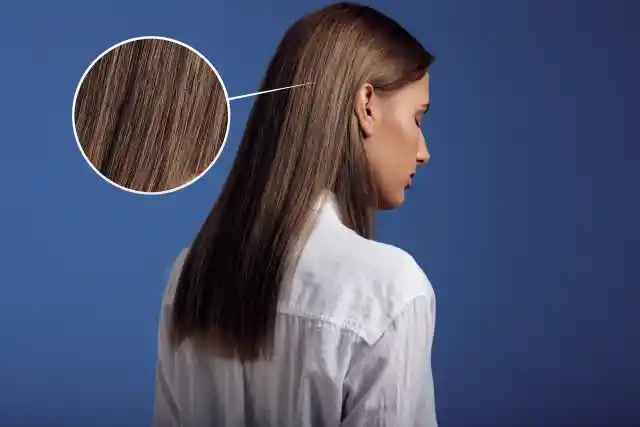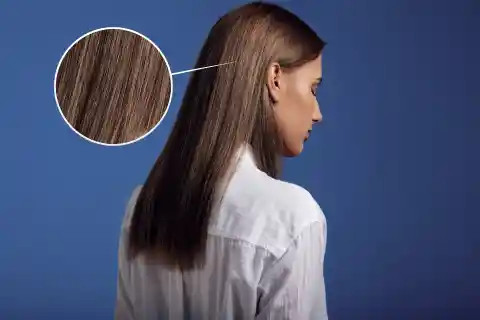The first step to crafting a hair care routine that works for you is understanding your hair type. Being aware of your hair type can help you pick the right products and style to maintain your hair healthy and make it look its best.


Porosity, density, and thickness are the three factors that affect hair the most. Understanding these three aspects of your hair could be a lot more useful as you take on your natural hair journey and learn how to take care of your strands.
Here is the best guide to understanding your hair type:
Porosity
The porosity of hair refers to its capacity to take in and hold moisture. There are three porosity levels: High, Medium, and Low.


Here's the test to determine the porosity of your hair:
o Wash your hair with shampoo and don't use conditioner.
o Pour room-temperature water into a glass or bowl.
o Put a clean strand of hair in the water.
o Wait for 2-4 minutes.
o Check the hair strand:
· If the hair is still floating on the water's surface, it has low porosity. Since the cuticles are close together, water has a hard time penetrating them.
· If the strand of hair sinks to the bottom, it shows that it has a high porosity. Since the cuticles are fairly exposed, water can easily get in and escape.
· If the hair descends slowly to the middle of the glass, it has medium porosity. Because the cuticles are partly open, some water can be absorbed and held.
Suggestion: Due to the huge gaps in the hair shaft, high-porosity hair readily absorbs moisture but also readily releases it. Avoid using heat on your hair since it might further dry out the strands. Instead, seek hydrating hair products that will offer your hair plenty of moisture. Normal or medium-porous hair readily absorbs and holds onto moisture. Volume or flexibility won't be an issue for you. The hair feels lustrous and healthy. No extra maintenance is needed. It takes some effort to get moisture into low-porosity hair, and products usually accumulate on the hair shaft. People with low porosity hair should avoid using heavy, thick creams and butters and instead choose creamy lotions, lighter liquids, or sprays.
Hair Density
Density refers to how closely packed individual hair strands are.


· If your scalp is visible, you have a lower density, which means fewer individual hair strands. While fine hair is simpler to manage, it doesn't always retain a style very well.
· If you can see your scalp, your hair is medium density. Hair with a medium density holds styles well and is easy to style.
· You have high density if you can hardly see your scalp or not at all. While thick hair keeps curls nicely, styling can be more challenging.
Suggestion: Avoid items that will weigh down your hair if you have hair with low density. Use lightweight products to add hold and nourishment.
Texture


Texture refers to the breadth of your hair strands, also known as the diameter of your hair, or how thin or thick each individual strand is. Typically, there are three types of hair: fine, medium, and thick.
Since fine hair usually does not retain hairstyles effectively, you must backcomb and use a lot of extra-strong hairspray. Thick hair holds quite well, but because it's usually less elastic, it can be challenging to style. The ideal hair is medium-length since it retains styles well and is simple to style.
Test: Compare a single hair with a sewing thread. If your hair seems thinner than the sewing thread, it is fine; if it appears thicker, it is most likely thick. Anything in between would be considered average.
Fine Hair:
It has a diameter of under 0.06 mm. Fine hair is more prone to sensitivity, damage, and is less able to withstand high temperatures from heat styling products. Another drawback of fine hair is that it frequently lacks volume, is limp, and can get greasy more quickly.
Because of this, fine hair needs the most careful maintenance. Suggestion: Fortifying products are preferred by fine hair. To avoid weighing the hair down and making it seem lifeless and drab, stylers must be lightweight. Like hair types with lesser density, volumizing hair products can be helpful for those with fine hair.
Medium/Normal Hair:
Typically, normal hair is 0.07 mm thick. Normal hair is naturally lustrous, supple, and undamaged; it is neither greasy nor dry. It requires little maintenance, looks excellent, and the hairstyle keeps its form well.
The hair is in excellent condition, which indicates that you adequately care for it. Suggestion: If you have medium hair, you don't need to use special cosmetics to care for it; instead, a shampoo for normal hair will suffice.
Thick Hair:
The diameter of thick hair is larger than 0.08 mm. While coarse hair has a lot of structure and seems thick and voluminous, it is also more prone to frizz, is harder to manage, and usually does not hold water as well as other hair types. This type of hair has the benefit of being more resistant to breakage, damage, and extreme temperatures.
Suggestion: People with coarse hair should use extra hydrating products to moisturize those strands and prevent frizz. Due to their high fatty acid content, we advise using extremely moisturizing shampoos, nourishing conditioners, and masks with a thick texture, such as those containing cocoa or shea butter. Products for smoothing and taming frizz are also appropriate.